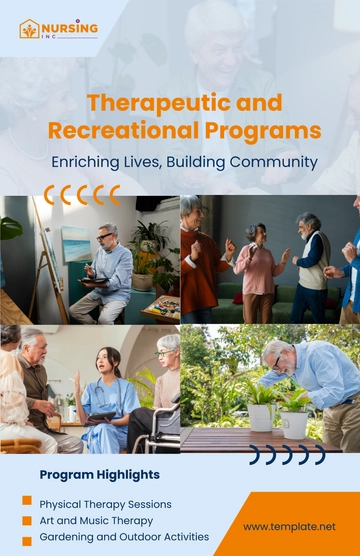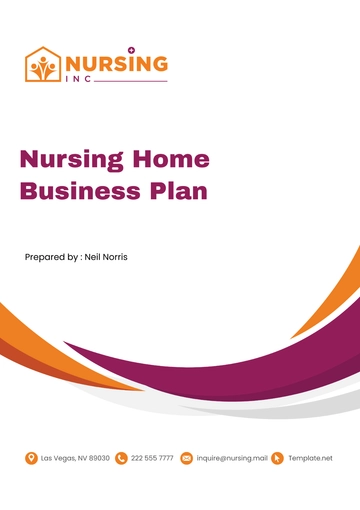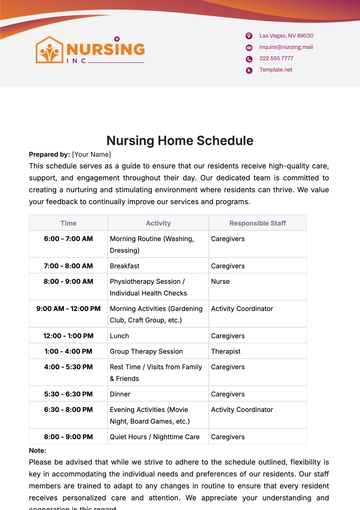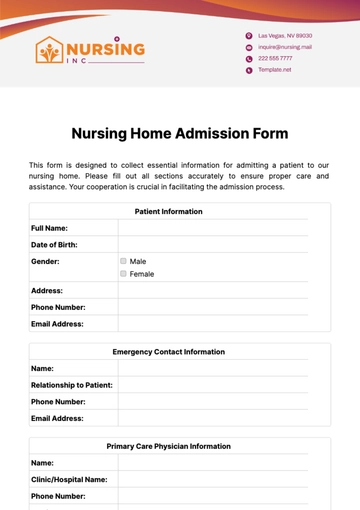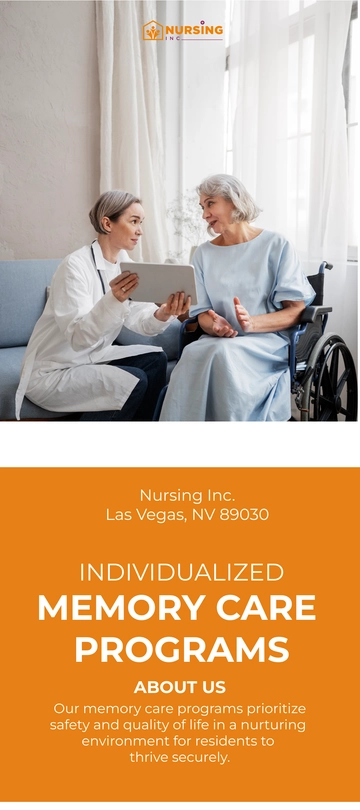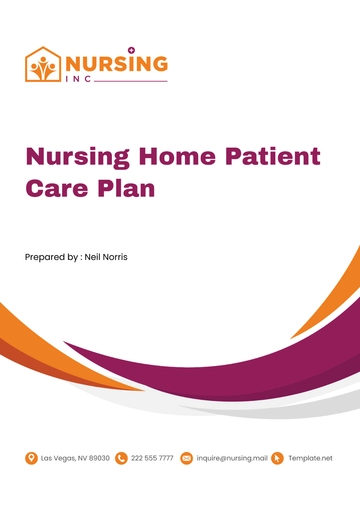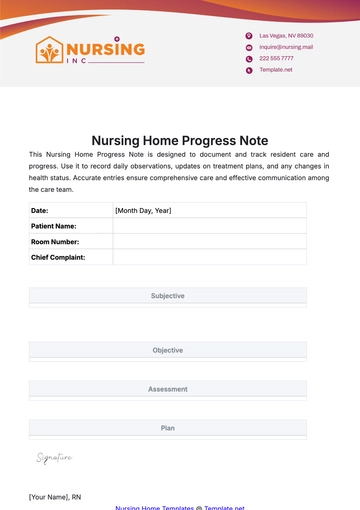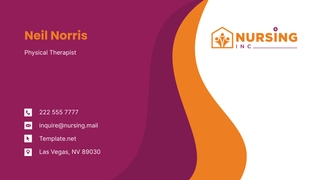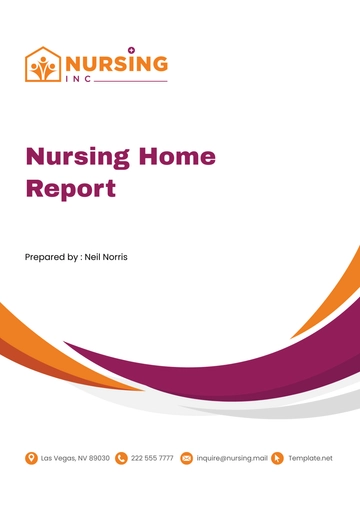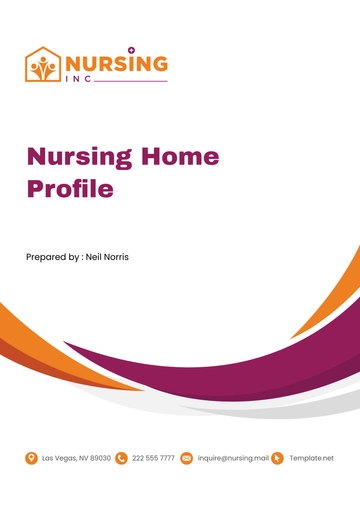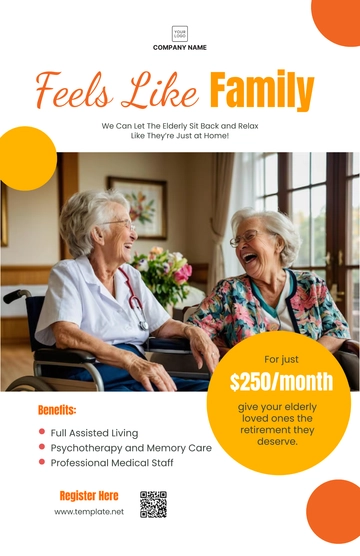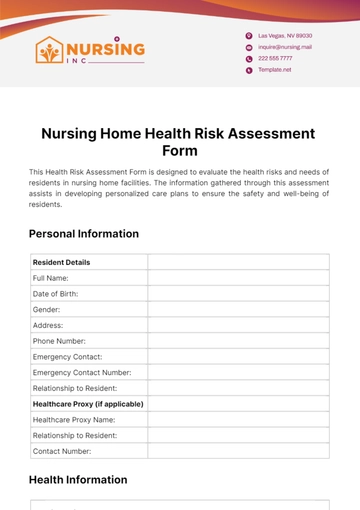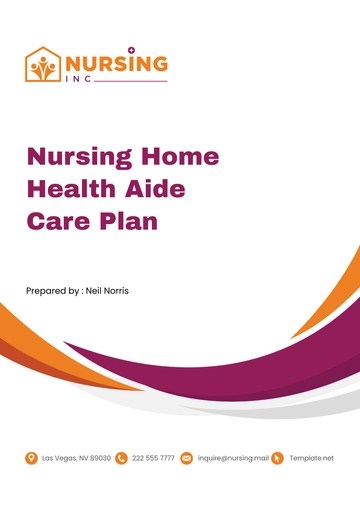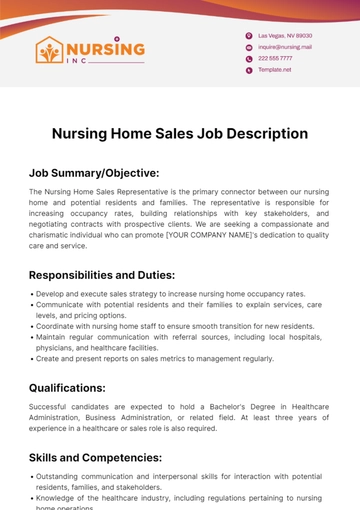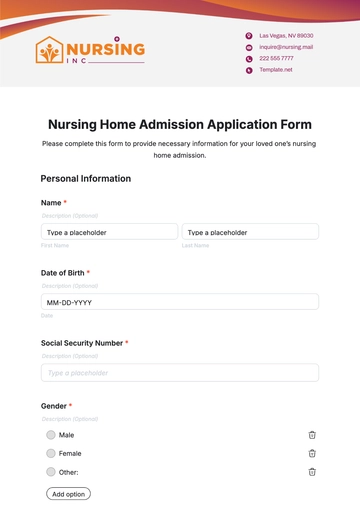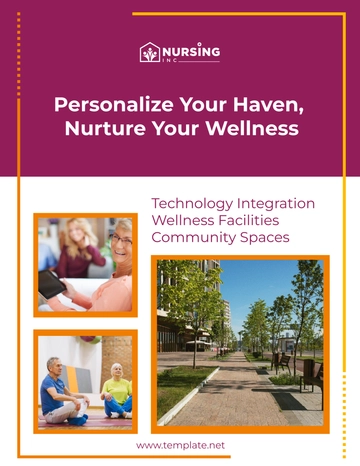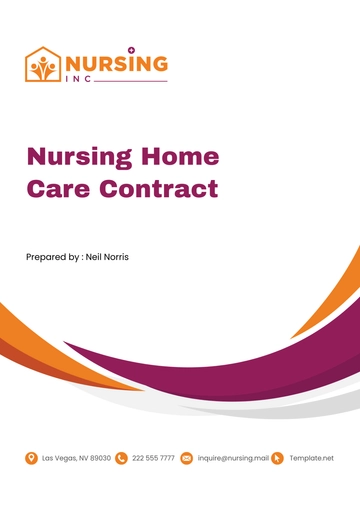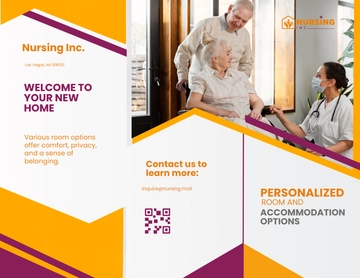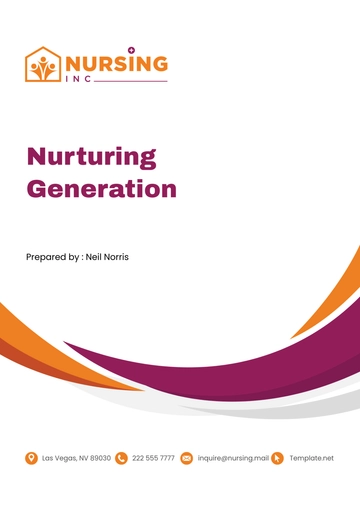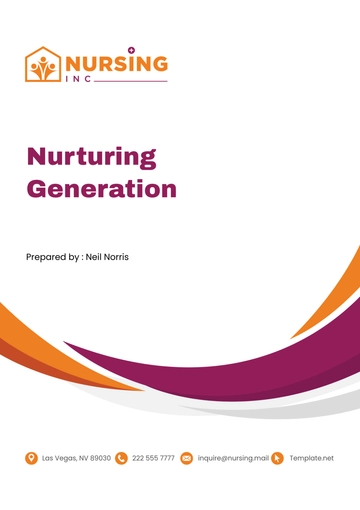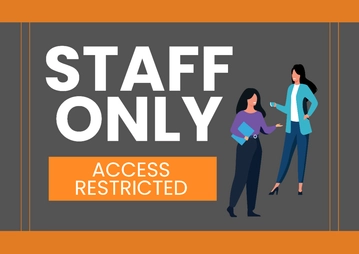Free Nursing Home Training Guide
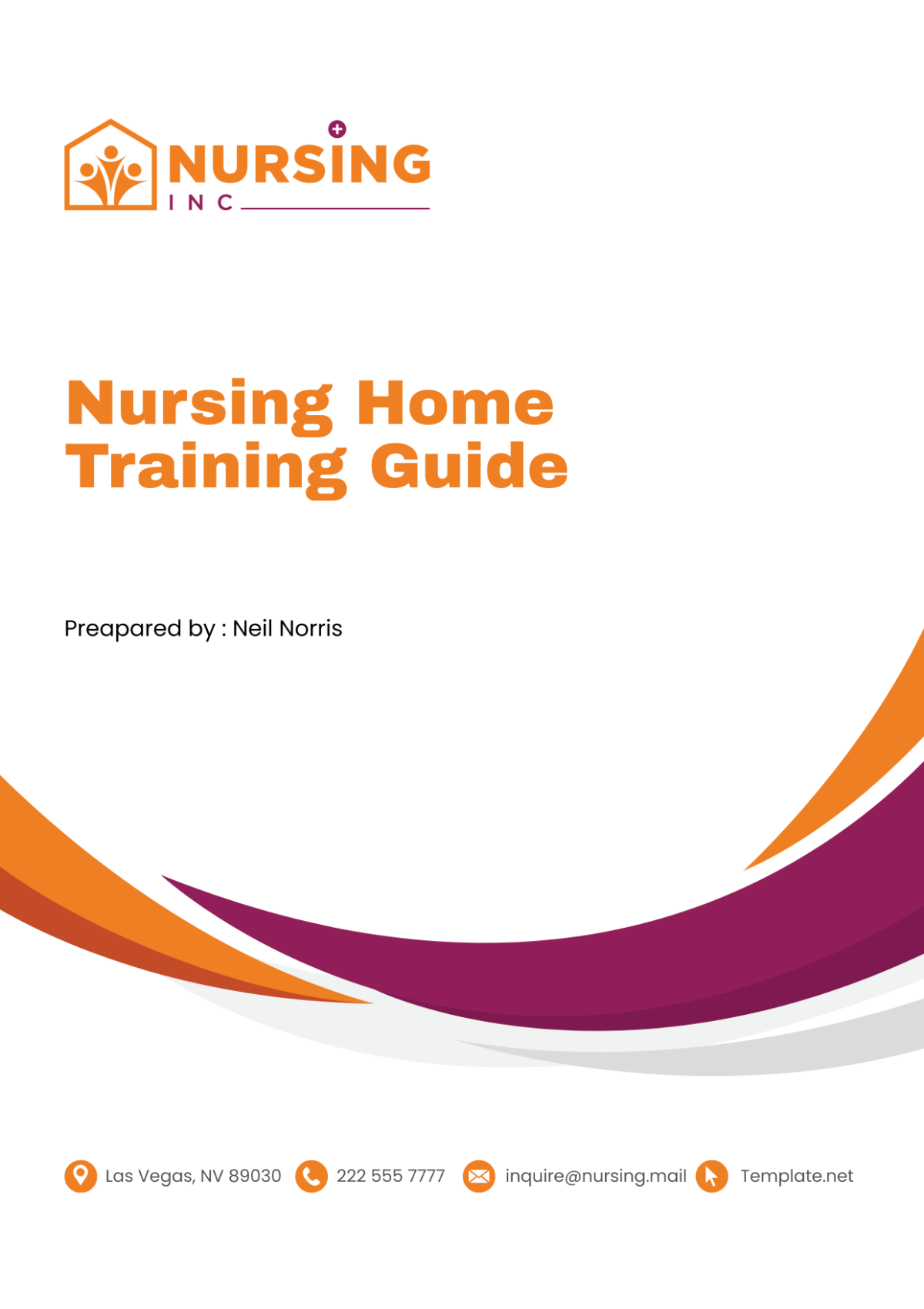
This Nursing Home Training Guide is designed to provide comprehensive training to our staff members at [Your Company Name] to ensure they are equipped with the knowledge, skills, and competencies necessary to provide high-quality care for our residents.
I. Orientation Program
Our orientation program is the first step in preparing new staff members for their roles within our nursing home. The program covers essential information about our facility, policies, procedures, and resident care practices.
Introduction to [Your Company Name]: New hires are introduced to the mission, values, and organizational structure of [Your Company Name]. They learn about our history, leadership team, and the services we provide to residents.
Regulatory Compliance: Orientation includes an overview of regulatory requirements and standards governing nursing home operations. This covers topics such as resident rights, infection control, safety protocols, and documentation practices.
Facility Tour: New staff members receive a guided tour of our facility to familiarize them with key areas, departments, and amenities. They learn about safety features, emergency exits, and the layout of resident rooms, dining areas, and common spaces.
Policies and Procedures: Orientation covers important policies and procedures related to employee conduct, confidentiality, communication, and professional standards. Staff members learn how to access and navigate our employee handbook and other relevant resources.
Role-Specific Training: New hires receive role-specific training tailored to their positions within the organization. This may include training on job responsibilities, tasks, equipment operation, and departmental procedures.
Supervisor Introductions: New staff members meet their supervisors and departmental managers during orientation. They have the opportunity to ask questions, clarify expectations, and discuss their roles and responsibilities within their respective departments.
Onboarding Checklist: A comprehensive onboarding checklist is provided to new hires to track their progress and ensure they complete all required training and orientation activities. Supervisors and HR staff provide guidance and support throughout the onboarding process.
II. Resident Care Skills
Providing compassionate and competent care for our residents is the core of our mission at [Your Company Name]. Staff members receive training on essential resident care skills to meet the diverse needs of our residents effectively.
Person-Centered Care: Staff members learn about the principles of person-centered care and the importance of treating each resident as an individual with unique preferences, needs, and backgrounds.
Activities of Daily Living (ADLs): Training covers assistance with ADLs such as bathing, grooming, dressing, toileting, and feeding. Staff members learn techniques for promoting independence and dignity while providing support to residents.
Medication Management: Staff members receive training on safe medication administration practices, including proper dosage, administration routes, documentation, and medication safety protocols.
Wound Care: Training is provided on wound assessment, cleaning, dressing changes, and prevention of wound complications. Staff members learn about evidence-based wound care practices and protocols for preventing infection and promoting healing.
Dementia Care: Staff members receive specialized training in caring for residents with dementia or cognitive impairments. This training covers communication techniques, behavior management strategies, and approaches for creating a supportive environment for residents with dementia.
Fall Prevention: Training emphasizes fall prevention strategies to minimize the risk of falls and injuries among residents. Staff members learn about risk factors for falls, environmental modifications, and techniques for assisting residents safely.
End-of-Life Care: Staff members receive training on providing compassionate care and support to residents and their families during the end-of-life process. This training covers advance care planning, pain management, emotional support, and cultural considerations in end-of-life care.
III. Communication Skills
Effective communication is essential for providing quality care and building positive relationships with residents, families, and colleagues. Staff members receive training on communication skills to enhance their interactions and promote resident satisfaction and well-being.
Active Listening: Staff members learn the importance of active listening in understanding residents' needs, preferences, and concerns. They practice techniques for attentive listening, empathy, and validation in their interactions with residents.
Verbal Communication: Training covers clear and effective verbal communication techniques for conveying information, providing instructions, and building rapport with residents and colleagues. Staff members learn to use simple language, speak clearly, and adjust their communication style to meet individual needs.
Nonverbal Communication: Staff members learn to recognize and interpret nonverbal cues such as body language, facial expressions, and gestures in communication with residents. They practice using nonverbal cues to convey empathy, reassurance, and understanding.
Cultural Sensitivity: Training emphasizes cultural sensitivity and awareness in communication with residents from diverse backgrounds. Staff members learn about cultural differences, beliefs, and practices and how to adapt their communication approach to respect cultural preferences and promote inclusivity.
Conflict Resolution: Staff members receive training on conflict resolution techniques to address disagreements or misunderstandings that may arise in the course of care delivery. They learn strategies for de-escalating conflicts, finding mutually acceptable solutions, and maintaining professionalism and respect.
Family Communication: Training includes strategies for effective communication with residents' families and caregivers. Staff members learn to provide updates, answer questions, and address concerns in a timely and compassionate manner, fostering trust and collaboration with families in the care process.
Interdisciplinary Communication: Staff members learn the importance of interdisciplinary communication and collaboration in providing holistic care to residents. They practice sharing information, coordinating care plans, and consulting with other healthcare professionals to ensure comprehensive and coordinated care for residents.
IV. Safety Protocols
Ensuring the safety and well-being of residents, staff, and visitors is a top priority at [Your Company Name]. Staff members receive training on safety protocols and procedures to prevent accidents, respond to emergencies, and maintain a safe environment within the facility.
Infection Control: Staff members receive training on infection prevention and control measures to minimize the spread of infectious diseases within the facility. This includes hand hygiene, personal protective equipment (PPE) use, cleaning and disinfection protocols, and respiratory hygiene practices.
Fall Prevention: Training emphasizes fall prevention strategies to reduce the risk of falls and injuries among residents. Staff members learn about risk factors for falls, environmental modifications, and techniques for assisting residents safely.
Emergency Response: Staff members receive training on emergency response procedures for various scenarios, including fires, medical emergencies, natural disasters, and security incidents. They learn their roles and responsibilities in emergency situations, evacuation routes, and protocols for alerting emergency services and contacting supervisors.
Safety Equipment: Training covers the proper use and maintenance of safety equipment and assistive devices within the facility. Staff members learn how to use equipment such as bed rails, wheelchairs, and lifts safely and effectively to prevent accidents and injuries.
Fire Safety: Staff members receive training on fire prevention, evacuation procedures, and the use of fire extinguishers. They learn to identify fire hazards, respond to fire alarms, and evacuate residents safely in the event of a fire emergency.
Medication Safety: Training includes protocols for safe medication storage, handling, and administration to prevent medication errors and adverse drug events. Staff members learn about medication safety guidelines, double-checking procedures, and documentation requirements for medication administration.
Workplace Safety: Staff members receive training on general workplace safety practices to minimize the risk of accidents and injuries. This includes ergonomics, proper lifting techniques, and hazard recognition and reporting procedures.
V. Cultural Sensitivity
At [Your Company Name], we recognize and celebrate the diversity of our residents and their families. Our staff members receive training on cultural sensitivity and competence to ensure that they provide care that is respectful, inclusive, and responsive to the unique needs and preferences of each individual.
Cultural Awareness: Staff members undergo training to increase their awareness and understanding of cultural diversity within the resident population. This includes learning about different cultural beliefs, values, traditions, and practices related to health, illness, and caregiving.
Respect for Diversity: Training emphasizes the importance of treating all residents and their families with respect and dignity, regardless of their cultural background or identity. Staff members are trained to avoid making assumptions or judgments based on cultural stereotypes and to approach each resident as an individual with unique preferences and needs.
Language Services: We provide language assistance services, such as interpretation and translation, to ensure effective communication with residents who have limited English proficiency or who communicate in languages other than English. Staff members are trained on how to access and utilize language services appropriately to facilitate communication and understanding.
Cultural Competence in Care: Staff members receive training on culturally competent care practices that respect and accommodate cultural differences and preferences. This includes incorporating cultural rituals, foods, and customs into care plans, as appropriate, and consulting with residents and their families to understand their cultural preferences and beliefs.
Religious and Spiritual Needs: Training covers the importance of addressing residents' religious and spiritual needs with sensitivity and respect. Staff members are trained to accommodate residents' religious practices, rituals, and observances, and to provide support for spiritual well-being and comfort.
Cultural Humility: We promote a culture of humility and openness to learning about different cultures and perspectives. Staff members are encouraged to reflect on their own cultural biases and assumptions and to approach cultural differences with curiosity, empathy, and humility.
Community Engagement: We engage with culturally diverse community organizations and resources to enhance our cultural competence and responsiveness. Staff members are encouraged to participate in cultural events, workshops, and trainings offered by community partners to deepen their understanding of cultural diversity and promote inclusive care practices.
VI. Continuing Education
At [Your Company Name], we are committed to supporting the professional development and growth of our staff members. Our continuing education program provides opportunities for ongoing learning, skill development, and advancement in the field of geriatric care.
Professional Development Plans: Staff members are encouraged to develop individualized professional development plans that align with their career goals and interests. This may include pursuing certifications, attending conferences, participating in workshops, or pursuing higher education opportunities.
Training Opportunities: We offer a variety of training opportunities to support staff members' professional growth and development. This includes in-person workshops, online courses, seminars, and on-the-job training experiences.
Certification Programs: Staff members are encouraged to pursue relevant certifications in their area of expertise, such as Certified Nursing Assistant (CNA), Licensed Practical Nurse (LPN), or Registered Nurse (RN). We provide support and resources to help staff prepare for certification exams and maintain their credentials.
Leadership Development: We offer leadership development programs for staff members who aspire to leadership roles within the organization. This includes mentorship opportunities, leadership training workshops, and participation in quality improvement projects.
Interdisciplinary Collaboration: Staff members are encouraged to collaborate across disciplines and departments to share knowledge, expertise, and best practices. This interdisciplinary collaboration enhances learning and promotes a culture of continuous improvement and innovation.
Feedback and Evaluation: We solicit feedback from staff members on their training needs and preferences through surveys, focus groups, and one-on-one discussions. This feedback is used to tailor training programs to meet the specific needs and interests of staff members.
Recognition and Rewards: We recognize and reward staff members who demonstrate a commitment to continuous learning and professional growth. This may include awards, incentives, or opportunities for career advancement within the organization.
By investing in the professional development of our staff members, we ensure that [Your Company Name] remains a leader in providing high-quality care and support for our residents.
VII. Conclusion
The training procedures outlined in this guide reflect [Your Company Name]'s commitment to excellence in providing care for residents of our nursing home facility. By prioritizing orientation, resident care skills, communication skills, safety protocols, cultural sensitivity, and continuing education, we ensure that our staff members are well-equipped to meet the diverse needs of our residents with compassion, competence, and professionalism. Through ongoing training, feedback, and collaboration, we strive to continuously improve our practices and maintain the highest standards of care and quality of life for all residents.
- 100% Customizable, free editor
- Access 1 Million+ Templates, photo’s & graphics
- Download or share as a template
- Click and replace photos, graphics, text, backgrounds
- Resize, crop, AI write & more
- Access advanced editor
Develop comprehensive training guides for nursing home staff with Template.net's Nursing Home Training Guide Template. Editable in our AI Editor Tool, this customizable template provides a structured format for organizing training materials, including policies, procedures, protocols, and best practices relevant to nursing home operations. Enhance staff competency, ensure consistency, and streamline training efforts!
